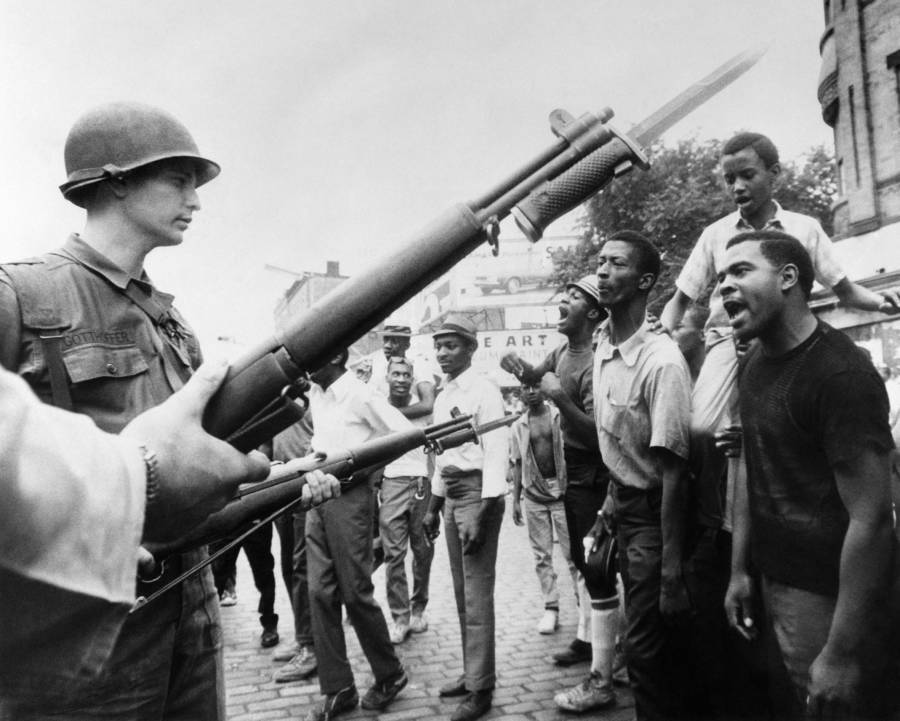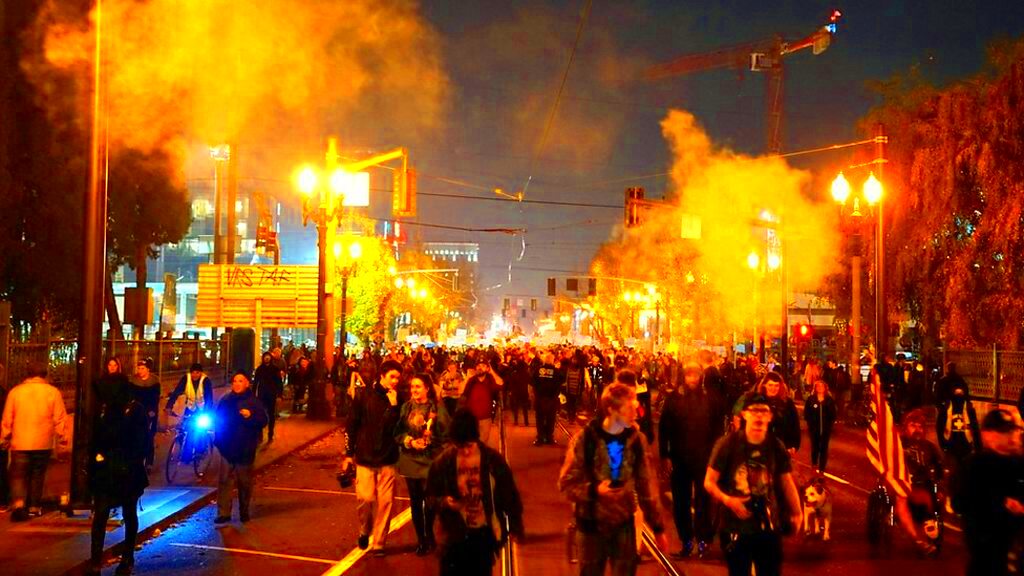Riotous upheavals are typically born from deep-rooted social malaise. An understanding of the context surrounding such occurrences can give a clearer picture of why they happen. In the United States, factors such as economic disparity, racial conflicts, and political turmoil have played important roles historically. When individuals feel marginalized, their frustrations may boil over into demonstrations or even riots at times.To understand these contexts in a better way let us consider the following factors:
- Historical Events: Past injustices often resurface in the present, influencing current sentiments.
- Social Inequality: Disparities in wealth and opportunity can lead to feelings of hopelessness and anger.
- Political Climate: A divisive political atmosphere can exacerbate tensions within communities.
- Media Influence: How events are reported can shape public perception and responses.
The examination of these factors enables us to better understand the reasons and feelings that prompt individuals to move out into the streets.
Exploring the Impact of Riots on Communities

The communities in which riots occur may be drastically affected by those riots. People who support riots believe that it draws attention to significant problems but there is more to it than that. The consequences of riots are both short-lived and perennial; they can affect different people differently.Among the principal effects are:
- Economic Consequences: Local businesses may suffer from damage or looting, leading to job losses and decreased investment.
- Community Division: Riots can create rifts within neighborhoods, making it harder for residents to unite for positive change.
- Increased Policing: A rise in law enforcement presence can lead to heightened tensions and further conflict.
- Long-term Trauma: Residents may experience psychological effects, leading to anxiety and distrust within the community.
Such results emphasize how intricate riots are and how they can rearrange neighborhoods positively or negatively.
Examining Media Representation of Riots
The media has an important part to play in shaping public perception concerning riots. There are the ways which these events can be reported such that they can affect people’s attitudes towards them and their understanding as well.At times, there is a coalition of various sources through which the
image can be created that is almost completely different thus resulting in misrepresentation or prejudice.When talking about media representation, some of the main things which one should keep in mind are:
- Framing of Events: The choice of words and images can convey a specific narrative, often focusing on violence over peaceful protests.
- Selective Coverage: Some outlets may emphasize certain incidents while downplaying others, skewing public understanding.
- Social Media Influence: Platforms like Twitter and Instagram allow real-time sharing, which can sometimes provide a more authentic view but may also spread misinformation.
- Public Reaction: How the media covers riots can directly impact public sentiment and response, potentially fueling further unrest.
By considering media representation there are people who help us to understand the major aspects of riots themselves without which it is impossible to fully comprehend the reason why they happen or what they mean.
Analyzing the Causes Behind Riots
Riots are not spontaneous, they are often the climax of a variety of long-standing underlying issues. Therefore, to comprehend what leads to riots we should explore thoroughly the societal, economic and political aspects that lead to upheaval.Key causes of the riots include following points:
- Social Injustice: Discrimination based on race, gender, or economic status can lead to feelings of anger and betrayal.
- Poverty and Unemployment: High levels of poverty and lack of job opportunities can create a sense of hopelessness, prompting people to act out.
- Police Brutality: Incidents of excessive force by law enforcement often serve as a catalyst for riots, especially if there’s a history of mistreatment in a community.
- Political Discontent: A lack of faith in political institutions or leaders can lead to widespread frustration, often manifesting in riots.
Protests occur for reasons that reflect people’s feelings and anger which sometimes turn out as violence. To address these issues thus totally prevent future unrest, it is important to know what are these root causes in order to understand them deeply.
How Riots Influence Public Opinion and Policy
Public riots manage to grab attention differently and initiate conversations that nobody would have talked about. They may be disturbing but they could also bring a new dawn. To appreciate their place in society, it is important to know how they affect the attitude of masses and policies set up by those in power.In what ways do riots shape people’s thoughts and also influence legal regulations?
- Raising Awareness: Riots often bring issues to the forefront, making people more aware of social injustices that need addressing.
- Influencing Public Sentiment: The images and stories that emerge from riots can shift public opinion, often leading to increased support for reforms.
- Prompting Policy Changes: In some cases, the outrage stemming from riots leads lawmakers to take action, whether through new legislation or reforms in policing practices.
- Encouraging Activism: Riots can inspire more people to get involved in advocacy work, pushing for systemic changes in their communities.
Despite the negative perceptions associated with riots, they can serve as an important, for instance in shedding light on the demands for change as well as rallying together people to achieve a particular purpose.
Understanding the Role of Social Media in Sharing Images
The current digital era has prompted modifications in communication and sharing of information, with social media being one key player. Such changes are clearly visible during riots when
images and videos circulate quickly affecting public perception and involvement. The importance of understanding this fact is crucial in making sense of today’s narrative about riots.Think about these aspects of how social media affect us:
- Real-Time Sharing: Platforms like Twitter and Instagram allow for immediate sharing of images and updates, bringing events to a global audience almost instantly.
- Viral Content: Powerful images can go viral, shaping the conversation and public opinion far beyond the location of the riots.
- Citizen Journalism: Ordinary people can document events as they unfold, often providing perspectives that traditional media might miss.
- Challenges of Misinformation: While social media can provide real-time updates, it also runs the risk of spreading false information, leading to misunderstandings and further conflict.
To sum up, riots are interpreted and acted upon by society through social media which gives a chance for people to present their feelings and experiences, ultimately triggering wider debates on social matters.
Addressing the Aftermath of Riots
Communities can face a tremendous and intricate moment the day after disturbances. The real labor starts when peace comes back. This involves in understanding exactly how much loss this riot has caused, both in terms of physical destruction and people’s feelings.To do this, people should sit down together as a unit so that they can stimulate communication on different problems that were behind the riot, and a way forward can be reached. Trust restoration and some kind of dialogue on what led to the upheaval should be part of community efforts.Here are some essential actions that should be taken to deal with the consequences:
- Assessing Damage: Communities need to evaluate the physical damage to property and infrastructure, identifying what needs repair and restoration.
- Providing Support: Local governments and organizations should offer assistance to those affected, such as financial aid for businesses and counseling services for individuals facing trauma.
- Encouraging Dialogue: Open conversations among community members, local leaders, and law enforcement can help rebuild trust and address grievances.
- Implementing Reforms: It’s vital to address the root causes of unrest through policy changes and community programs aimed at fostering inclusion and equality.
If communities center their efforts on cooperating for healing purposes, they would be able to progress and make strides towards an equitable society, thus minimizing the probability of riots in the future.
Frequently Asked Questions About Riots and Their Images
Disarray and visuals from uprisings can confuse lots of minds. Therefore, in this article we like to look at typical problems that will assist us clarify some misunderstandings and also enlighten on the subject.
| Question | Answer |
|---|
| What causes riots? | Riots often stem from social injustices, economic disparities, political discontent, and incidents of police brutality. |
| How do images influence public perception? | Images can evoke strong emotional responses, shaping how people view the events and the underlying issues. |
| Can riots lead to positive change? | Yes, while chaotic, riots can bring attention to critical issues, prompting public dialogue and policy reforms. |
| What role does social media play in sharing images? | Social media allows for real-time sharing of images, contributing to widespread awareness but also risks spreading misinformation. |
More knowledgeable discussions are encouraged by these questions as they reveal the complications involved in riots and the potent imagery attached to them.
Conclusion on the Significance of Images from Riots
Riots are not a mere chaotic photograph but show the society fight. These photographs show people’s tension, feel the realities, and express emotions in their raw state. Therefore through analyzing these pictures, we can be able to see what causes such tumultuous happenings as well as the requirement for changes.These
images have importance that can be summed up as follows:
- Documenting History: They become part of the historical record, illustrating moments of collective pain and resistance.
- Inspiring Action: Powerful images can motivate individuals to engage in activism and advocacy, pushing for reforms.
- Fostering Empathy: Seeing the human side of these events can evoke empathy, helping people connect with the struggles of others.
- Shaping Policy: Public reactions to these images can lead to discussions and initiatives aimed at addressing the root causes of unrest.
In summary, the pictures of the protests are very important because they trigger discussions and changes in society. When we understand their repercussions, we can contribute to enabling a fairer and juster world.
 The communities in which riots occur may be drastically affected by those riots. People who support riots believe that it draws attention to significant problems but there is more to it than that. The consequences of riots are both short-lived and perennial; they can affect different people differently.Among the principal effects are:
The communities in which riots occur may be drastically affected by those riots. People who support riots believe that it draws attention to significant problems but there is more to it than that. The consequences of riots are both short-lived and perennial; they can affect different people differently.Among the principal effects are:
 admin
admin








